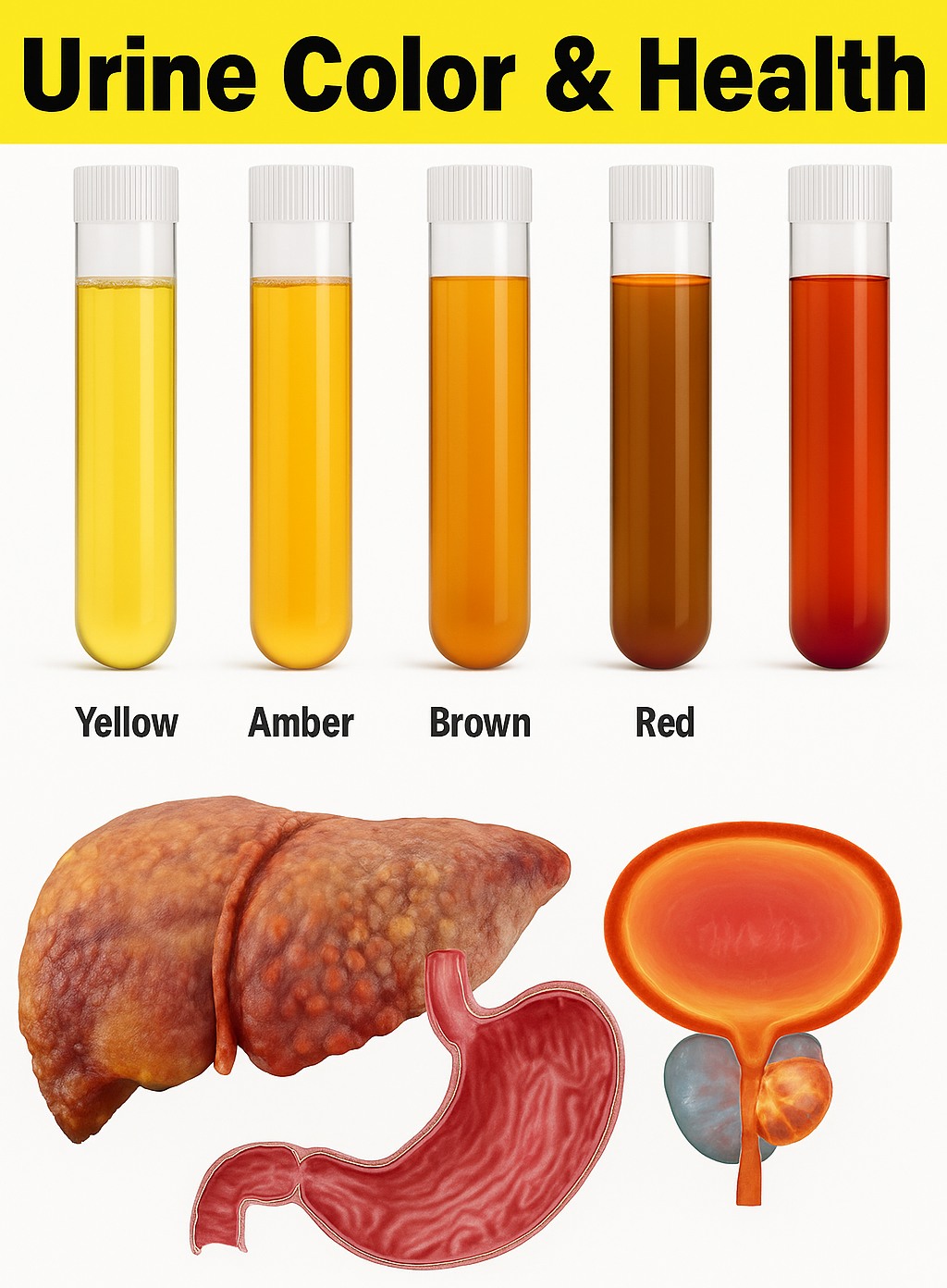Fun fact: Dehydration can also cause fatigue and headaches, so drinking more water might boost your energy too.
5. Orange Urine
🍊 What it means: Orange urine can raise eyebrows, and it’s worth paying attention to. This hue can stem from dehydration (similar to dark yellow), certain medications (like rifampin or phenazopyridine), or even eating lots of carrots or vitamin C supplements. However, it could also hint at liver or bile duct issues, especially if you notice pale stools or yellowing skin/eyes (jaundice).
When to act: If orange urine persists for more than a day or two and isn’t tied to food or meds, see a doctor. Liver issues are rare but serious, and early detection is key.
Stay curious: Keep track of new medications or dietary changes to pinpoint the cause.
6. Pink or Red Urine
🩸 What it means: Pink or red urine can be alarming, but it’s not always bad news. Did you eat beets, rhubarb, or blueberries recently? These foods can tint your urine naturally. If not, red or pink urine could indicate hematuria (blood in the urine), which might point to urinary tract infections (UTIs), kidney stones, or, in rare cases, more serious conditions like bladder cancer.
Act fast: Blood in your urine is a red flag that always warrants a doctor’s visit. Don’t wait it out—get it checked to rule out infections or other issues.
Pro tip: If you suspect food is the culprit, wait 24 hours and see if the color normalizes. If it does, you’re likely in the clear.
7. Dark Brown or Cola-Colored Urine
☕ What it means: This deep, cola-like shade is a serious signal. It could indicate severe dehydration, liver issues (like hepatitis), or even rhabdomyolysis—a condition where muscle breakdown releases harmful proteins into the blood. Certain medications or foods (like fava beans) can also darken urine.
Why it’s urgent: Dark brown urine, especially paired with fatigue, muscle pain, or fever, needs immediate medical attention. Your kidneys or liver could be under stress, and delaying care could worsen the issue.
Take action: See a healthcare provider as soon as possible. In the meantime, hydrate cautiously and avoid intense physical activity until you know the cause.
8. Blue or Green Urine
💎 What it means: Blue or green urine sounds like something out of a sci-fi movie, but it’s real—and rare. This unusual color is often caused by artificial food dyes (think blue sports drinks or green candies), medications (like methylene blue), or, in very rare cases, genetic conditions like familial hypercalcemia.
Fun fact: Babies with “blue diaper syndrome” have blue urine due to a metabolic disorder affecting tryptophan absorption.
